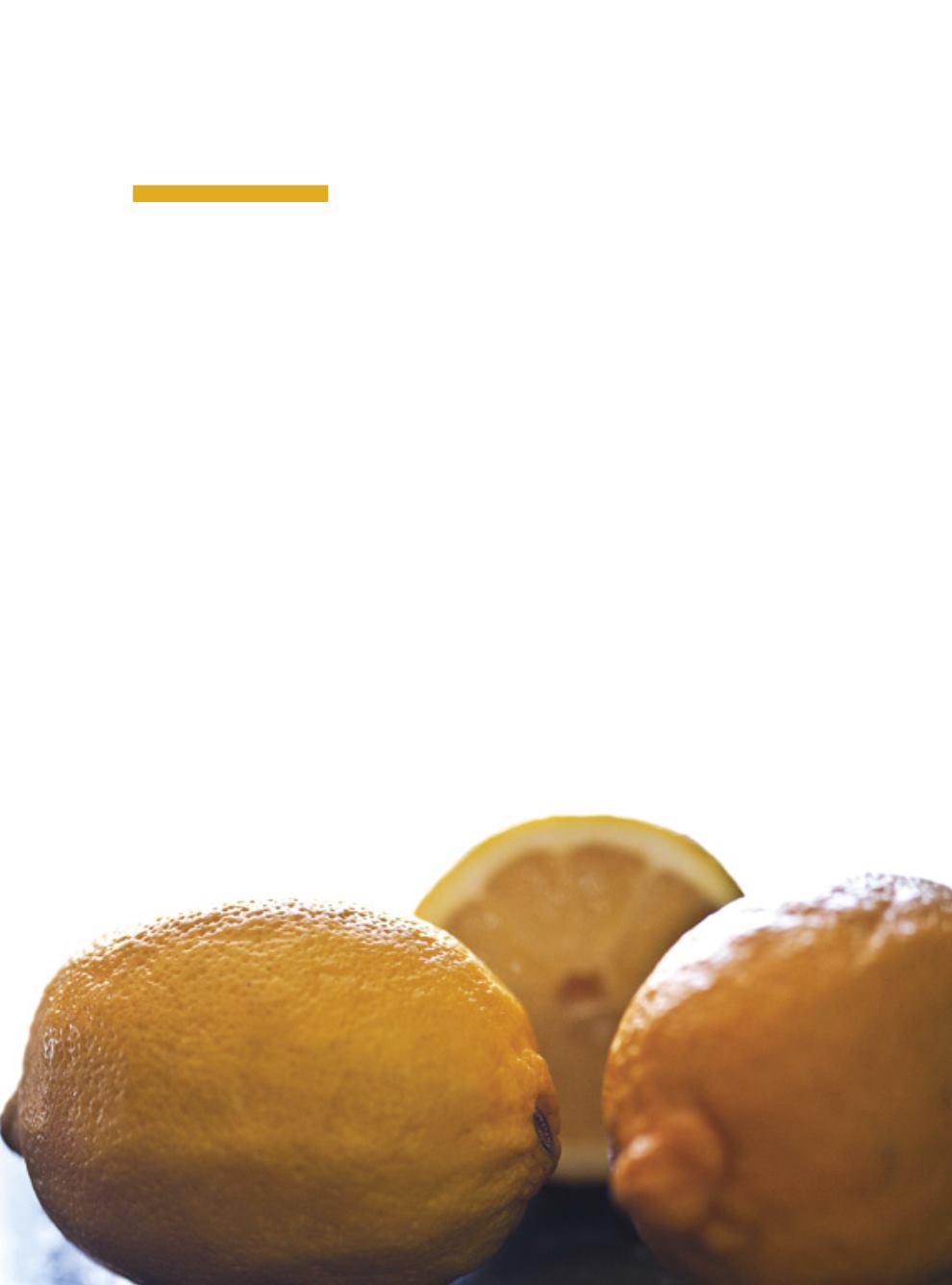
Inor Ag. Assmann
47
The biggest lemon growing area in Bra-
zil extends from the Center to the North
and Northwest of São Paulo, State that is
also leader in production, with almost 70%
of the total. In the region, the biggest pro-
ducer is Itajobi, with 126.4 thousand tons
in 2014 (more than the total of the sec-
ond biggest producer, the State of Minas
Gerais), the municipalities that are of note
are as follows: Urupês (57.9 thousand ton),
Taquaritininga (44.5 thousand tons), Itápo-
lis, Candido Rodrigues and Fernando Pre-
stes (upwards of 30 thousand tons).
In the 2016 Brazilian Fruit Yearbook,
Marcos Traldi, from Itajobi Agriculture
House, revealed that “the Lemon Capital
of the World” comprises approximately 600
producers, who cultivate 4 thousand hect-
ares, most of them acid limes (or Tahiti lem-
on), the leading variety in the Country. Fur-
thermore, in this variety, the most cultivated
fruits are Rangpur limes (or rose), Sicilian
and Galician lemons.
The second biggest producer is Minas
Gerais, where the North is the leading pro-
ducing region, accounting for about 70% of
the total in the state, and it is home to the Jaí-
ba Region Irrigated District, synonym for de-
velopment and quality of life”, in the opinion
of the Brazilian Confederation of Agriculture
and Livestock (CNA) and the Minas Gerais
State Federation of Agriculture (Faemg). “Ir-
rigated citrus farming has been the main
source of jobs and income in our region”,
says Cláudio Dykstra, president of the Jaíba
Region Association of Lemon Producers (As-
lim), which came from Paraná and produces
100 thousand boxes of the fruit in that irrigat-
ed area located in the semiarid.
According to sources from the Secre-
tariat of Agriculture and Supply, the share of
Minas Gerais in the crop rose from 6.6% to
10.2% in area and from4.9% to 10.5% in pro-
duction, from 2009 to 2014. The State that
ranks as third in the production of lemons,
Bahia, equally made strides during this peri-
od, from 53 thousand to 67.5 thousand tons
(or 5.9% to 6.1% of the total in Brazil), where
the highlight is Tanhaçu (15 thousand tons),
in the Central-South region. In area, accord-
ing to the Brazilian Institute of Geography
and Statistics (IBGE), the Country registered
reductions in the past years (5%, for exam-
ple, from 2013 to 2014), but the value of the
production shows energy: it rose over the
past two years, from R$ 687 to 803 million.
Lemons may be sour,
but the revenue they
generate frombusinesses
in themain producing
states is nothing
but sweet
Sweet and
sour


